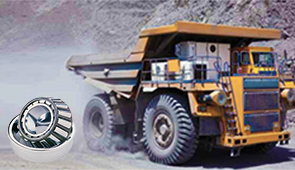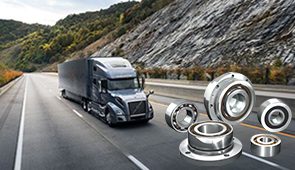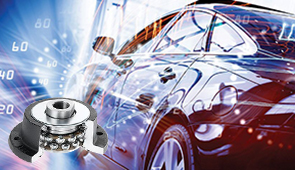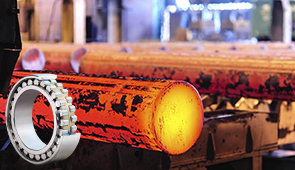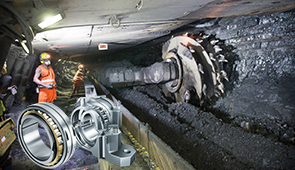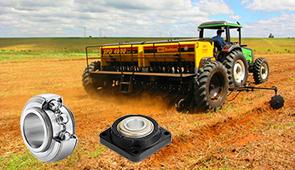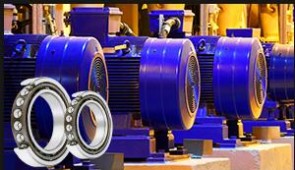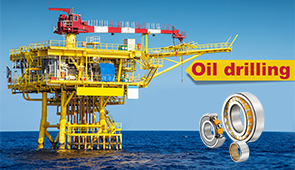How Ball Bearings Reduce Friction: The Ultimate Guide
Ball bearings are among the most critical innovations in modern engineering, driving efficiency and precision in countless industries. Whether used in machinery, vehicles, or cutting-edge technology, these small yet mighty components play a pivotal role in reducing mechanical friction and enabling smooth motion. But have you ever wondered how ball bearings work or why they are so effective? This guide dives deep into the science, mechanics, and applications behind ball bearings, offering a comprehensive understanding of their functionality. By the end of this article, you’ll gain a clear insight into why ball bearings are indispensable across various industries and how they contribute to overall performance and durability.
What is a Ball Bearing and How Does it Work?
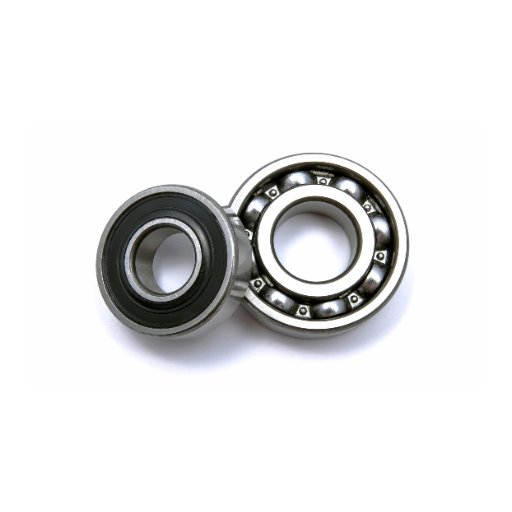
Understanding the Basics of Ball Bearings
Ball bearings are classified as rolling element bearings used to decrease friction and enable the free rotational movement of one surface about another surface. They are made up of balls of steel, ceramic, or some other hard material, which are located between an inner and an outer race. The balls act as the rolling elements, which are the components of the bearing that do the rolling and serve to on the contact areawhere friction takes place in other types of bearings.
A ball bearing serves mainly to support both radial and axial loads in a system. Radial loads are normal to the axis of rotation, and axial loads parallel. Ball bearings will perform better than other types of bearings capable of supporting radial and axial load because of sheer minimal friction and greater load distribution. This characteristic makes them useful on vehicles, industrial machines, and even on household appliances.
Ball bearings accomplish their purpose through a thoughtful, precise design. The herculean effort exerted together by maintaining the balls smooth, making sure their motion is as speedily accurate as possible, ensures minimum energy loss whilst lubricating and greasing, preventing overheating and wear from elapsing over time. The specific materials used for the balls and races, together with the grease used for lubrication, characteristically make the balls and their surrounding parts withstand diverse conditions without compromising reliability.
The Role of Raceways and Rolling Elements
In ball bearings, raceways and rolling elements perform the dual function of load support and rotation facilitation. The raceways are usually formed by the inner and outer rings which serve as guides for rolling elements. The geometry of raceways is designed to provide optimum force distribution, enable efficient load transfer while minimizing stress concentration. The sequential arrangement of parts provides a frictionless rotation which increases the system efficiency.
The rolling elements or balls are located between the raceways and perform the primary motion in the bearing. These components are usually manufactured from highly abrasion-resistant materials such as chrome steel or ceramic due to high speeds of operation across the rotary interface. The rolling elements have a direct relationship with the load capacity; the performance of bearings is proportional to the number and size of rolling elements. Smaller, numerous balls provide better load distribution, but may increase friction; conversely, larger balls can handle heavier loads.
The raceways and rolling elements work together to preserve the stability and prolong the life of ball bearings. Their life expectancy is proportional to the care taken in the application of lubrication and the accuracy in the manufacturing processes. Any maintenance neglect, misalignment, material shortcomings, and the like are capable of generating excessive heating and wear, resulting in bearing failure. This places a premium on the design, care, and maintenance of these components.
Ball Bearings vs. Roller Bearings: Key Differences
Bearings are classified according to their intended use and structural design; thus, ball bearings and roller bearings are two types that are widely used. A ball bearing contains a row of spherical rolling components known as balls, which reduce the friction between the moving parts as well as providing radial and axial support. These bearings are best suited for applications such as electric motors, fans, and other precision instruments where high speed of rotation is needed and the load capacity is limited. Their design’s frictional point contact feature minimizes friction but does not support heavy loads as effectively as roller bearings.
Roller bearings use cylindrical or tapered rolling elements instead of spherical balls. Their row of balls are arranged such that a line contact is made, which improves the heavy load bearing capabilities of the bearing, especially radial loads. Roller bearings are made to operate at lower speeds. They find use in heavy duty applications like conveyor belts and gearboxes, with industrial heavy machinery where weight must be supported,along with strength differentiates these bearings from the rest.
The distinguishing feature between these two is the speed at which they can operate as well as the load supported. While ball bearings are best used in high speed with lighter loads, slower speed bearings support higher load applications. Choice of bearing type depends on the specific machinery specifications which include the load values, speed, and working conditions.
How Do Ball Bearings Reduce Friction?
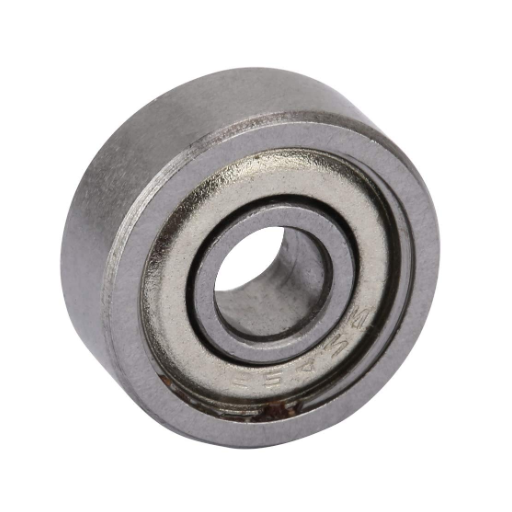
Transforming Sliding Friction into Rolling Friction
Ball bearings reduce friction to a great extent by converting sliding friction into rolling friction. When two surfaces directly move relative to each other, sliding friction occurs. This type of friction is one of the most resistant and occurs because of the large area of contact surface between the two objects. However, rolling friction in ball bearings greatly reduces sliding contact since the spherical balls touch the inner and outer races at peak points only. This difference is critical in minimizing energy losses and wear in the machinery.
In addition, optimizing performance depends a lot on the material and surface finish of bearing parts. Advanced materials such as ceramic or hybrid ceramics are now being utilized in modern ball bearings. These types of materials offer lower coefficients of friction, higher temperature limits, and greater durability than traditional steel materials. Research has shown that the use of ceramic ball bearings can decrease friction by as much as 30 percent in high-speed applications, resulting in improved efficiency and a longer service life.
Another important step towards minimizing friction is proper lubrication. Purpose-built lubricants specifically designed for the bearing type and operating conditions work wonders in bearing friction. Suitable lubricants create thin films which reduce direct metal contact and further friction. This, alongside precise engineering and alignment, delivers optimal operation even during variable load and speed conditions.
The Impact of Lubrication on Friction Reduction
Lubricants protect, shield, and cushion surfaces from direct contact friction in mechanical systems, and therefore, wear is minimized, system efficiency increases, and smoother operation is achieved. Furthermore, effective lubrication assists in temperature control by removing heat that is generated during the operation of the system; this is important to prevent overheating and thermal degradation of system components.
That advanced synthetic lubricants, as compared to conventional lubricants, have a 50% lower friction coefficient, particularly at high pressure and temperature conditions. For example, in tailored ball bearings applications, designated lubricants with specialized additives like Molybdenum Disulfide or Zinc Dialkyldithiophosphate (ZDDP) perform better because they sustain film strength irrespective of variable load conditions.
In addition, the environment lubricant will be used in, such as load, rotational speed, and contamination level, must also be taken into account. Currently, engineers are using predictive analytics and IoT as Advanced Technologies to monitor lubrication in real-time, which allows for refined control of friction, resulting in longer-lasting components. Such innovations with effective lubrication policies advance friction reduction strategies and continue to optimize engineering efficiency.
The Importance of Low Torque in Ball Bearings
The amount of low torque in ball bearings directly relates to the greater efficiency of different mechanical systems. Torque, in particular the frictional torque present in each bearing, has a direct effect on the energy, temperatures during operation, and the life span of mechanical systems as a whole. In systems with high speeds like electric motors, precision tools, and automotive systems, minimizing the torque goes a long way in ensuring lower frictional losses, which is greatly needed for performance and overall torque for efficiency with energy consumption.
Coatings have specialized and advanced rheological greases designed to further reduce torque, thanks to innovation in science paving the way for new lubrication techniques. PTFE coatings, for example, are popular for the reduction of surface friction. Synthetic lubricants of low viscosity bolster motion by reducing lubricant thickness, creating an efficient film instead. These factors not only reduce friction but also contribute toward heat sorption, expansion, and mechanical wear, eliminating inconsistencies during operational phases.
Good internal design of ball bearings is an equally important precondition for low-torque performance. Uniform loadings and minimized point contacts, which cause friction or resistance, are more easily achieved with appropriately designed raceways and balls. Their rational shape, combined with mechanical engineering accuracy in bearing production, achieves greater rotational efficiency without compromising strength and stability during variable speeds and loads.
Common Applications of Ball Bearings
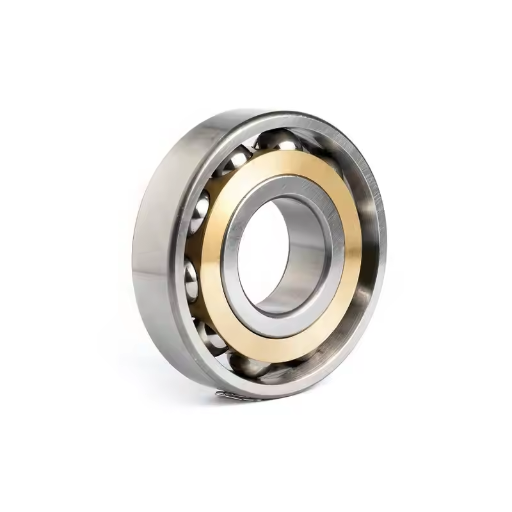
Ball Bearings in Machinery and Industrial Equipment
In various industrial tools and machinery, Ball bearings are vital parts whose low-friction capability, as well as resistance against wear, enhances operational effectiveness and reliability. They provide radial and axial load support while rotational resistance is kept to a minimum, which makes them indispensable in motors, gear pumps, and conveyor systems. Ball bearings with a high level of precision are readily available in devices such as CNC machines and robots, which require precise alignment and smooth motion, as micrometer-level accuracy is needed.
The capabilities of ball bearings are further improved with the recent innovations in materials and lubricants. For example, ceramic hybrid bearings are superior to steel due to their heat resistance, lower density, and reduced operational wear resulting from increased speed. Other industry-specific configurations include sealed or shielded ball bearings, which perform optimally in environments contaminated by dust, moisture, or chemicals.
Such statistical efficiencies are remarkable; to cite an example, ball bearings with proper maintenance improve the energy consumption of machinery by as much as 30% due to reduced torque losses. This improvement in efficiency makes industrial operations drastically lowers costs and carbon emissions, making them even more important for achieving the sustainable manufacturing goals.
Everyday Uses: From Household Appliances to Vehicles
Bearings play a very important role in our day to day machinery for smooth movement without friction. Appliances that use these types of machine parts are: fridges, fans and washers. For example, power drums in washers have special bearings that enable them to rotate efficiently so that the appliances does not waste energy or undergo damage. Furthermore, they also enable the cooling cycles in refrigerators by supporting the compressor.
In the automobile industry, ball bearings are a must in crucial parts like axles, gear shifts, and wheel bearings. Parts that have to carry a heavy load that modern cars need to have attributed to their speed rely on high-quality ball bearings. To put up with harsh temperatures and conditions, increasing numbers of modern vehicles use new materials and design their own hybrid ceramic ball bearings, which are much more durable.
This type of innovation also applies to EVs (electric vehicles), for which specially designed ball bearings are used in electric motors to improve accuracy as well as energy consumption. The importance of ball bearings in modern and future technologies cannot be emphasized enough as their usefulness span over so many fields while providing guarranteed efficiency and durability.
Specialized Uses: High-Performance and Ceramic Bearings
Bearing with high performance are manufactured to withstand high stress, speed, or need for precision, which is the case in applications like aerospace, robotics, and automotive racing. These industries require accurate processes at high speeds. To meet such demands, high-performance bearings are made with sophisticated materials like chrome or stainless steel to minimize friction, thermal expansion, and provide reliable load management even with high RPMs.
Ceramic bearings, on the other hand, are made with advanced materials such as silicon nitride, which makes them light and hard as compared to steel. These claws are extremely else plastic, durable, have low wear resistance, and minimal thermal conductivity, which greatly reduces overheating. Unlike stainless steel bearings, ceramic bearings are non-magnetic and anti-corrosive, making them ideal for delicate medical devices, sterile environments, and chemical processing.
Coupled with advanced methods of lubrication, along with the innovative design and engineering of high-performance and ceramic bearings, aids in maximizing the operational efficiency and service life of system components. They are transforming the performance of machines and equipment by meeting the needs of modern-day industries in precision, reliability and operational efficiency.
What are the Different Types of Ball Bearings?
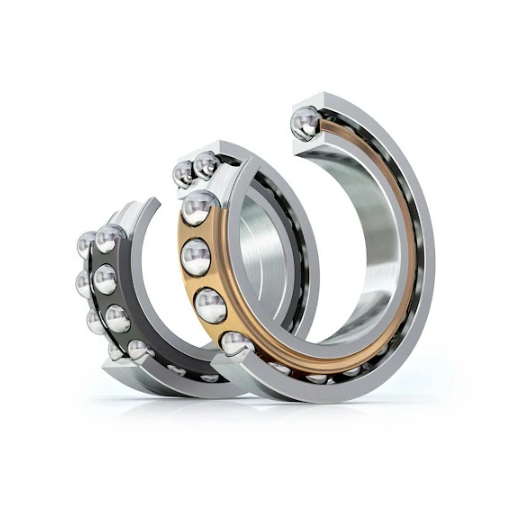
Deep Groove Ball Bearings: Versatility and Load Capacity
Industries widely utilize deep groove ball bearings owing to their straightforward design and reliability in operation. Radial and axial loads are supported by these bearings, allowing broad application versatility. An inner ring, outer ring, cage, and balls that form these unique bearings aid in decreasing friction, heat, and handle high speeds.
The advent of material science paved the way for the use of deep groove ball bearings made from high grade steel or ceramic to withstand extreme conditions like high speed machinery or heavy-load settings. Optimized lubrication systems have also minimized the frequency of maintenance required, thus augementing operational life.
With ease of implementation and lower maintenance requirements, there is an increased global demand for deep grove ball bearings in electric motors, automotive, aerospace and manufacturing industries. Adaptability to extreme temperatures and harsh conditions also contribute to this rising demand. For instance, deep groove ball bearings assistance in providing precision and quiet operation in electric motors.
Deep groove ball bearings continue to be integral in contemporary systems by combining modern innovations with sophisticated lubrication, advanced materials, and maintenance requirements. This allows engineered systems to meet the ever-growing need for efficiency, reliability, and cost-effectiveness.
Angular Contact Ball Bearings: Handling Radial and Axial Loads
Bearing with axial and radial loads at the same time, angular contact ball bearings are essential where utmost accuracy, precise engineering, and optimal performance are required simultaneously. Their internal and external rings have offset raceways. This offset permits a bearing to support substantial radial and axial loads in one direction.
Recently developed manufacturing technologies and new materials, for instance, the use of ceramics for rolling elements, enabled the bearings to be used in applications with extreme durability and low friction at high speeds to exploit their low weight and exceptional resistance to thermal expansion. Moreover, new designs for raceway shapes and pre-loading systems have been incorporated to improve bearing stiffness and operational reliability under varying loads.
Angular contact ball bearings are commonly used in parts of the aerospace industry, automotive, and machine tool industries due to their ability to withstand dynamic loads and perform reliably. As an example, they are part of the components in jet-engine turbines, which necessitate high speed and temperature endurance. These bearings are still developing with the addition of hybrid designs and high-performance lubrication systems to meet the advanced engineering system requirements.
Specialty Bearings: Ceramic and Steel Variants
Hybrid ceramic-steel and ceramic specialty bearings facilitate modern engineering systems in ways where traditional materials might be lacking. Aside from boasting great hardness, low density, and resistance to wear and corrosion, ceramic bearings which are made of either silicon nitride or zirconium oxide, are capable of withstanding an array of industrial workloads. This is especially evident in dental drills, turbochargers, and high-need-for-frequency spindles which need lightweight components to ensure stability whilst in operation.
Steel bearings are more suited for applications that necessitate heavy load bearing capacity, stress, and fatigue. 52100 chrome steel or AISI 440C stainless steel bearings are incredibly tough and possess great tensile strength, which leads them to be widely used in industrial machinery, robotics, and automotive systems. More recent innovations feature hybrid bearings such as those with hardened steel races and ceramic rolling components. These offer a new range of possibilities by marrying durability with precision.
Such advancements are aided by unique solid lubricants and low-friction coatings that improve efficiency while extending operational lifespans. The combination of these new materials and engineering methods guarantees that specialty bearings still lead in performance-driven applications.
Maintenance Tips for Extending the Life of Ball Bearings

Proper Lubrication: Oil or Grease?
The selection between grease and oil for lubricating ball bearings is influenced by the particular application, working conditions, and a variety of other factors. Oil is commonly used as a lubricant on busy ball bearings, or in places where the temperature is hot, since oil can provide better cooling and friction reduction. Furthermore, oil is simpler to filter and maintain which makes it appealing in clean and precise environments, such as aerospace parts or high-speed spindles.
Additionally, grease serves well for applications that need long-lasting performance with very little maintenance. Grease is composed of a base oil, a thickener, and other substances packaged together to form a mixture. The lubricating film created by grease, which is poured into the bearing, is very difficult to displace regardless of the load or positioning of the bearing, which makes it very useful for low to moderate speed applications or enclosed systems where lubricant refill is not often done.
Understanding the operational limits for the bearing, including temperature limits, tolerable load, and exposure to elements, is important when choosing what type of lubricant to use. Modern engineering research suggests that using synthetic oils or sophisticated grease mixtures instead of old ones increases energy efficiency by 25% and bearing longevity by 50%, making them more optimal. Optimal selection of the lubrication type ensures bare minimum wear, which means a reduction in operational costs in the long run.
Identifying and Preventing Wear and Tear
Mechanical components undergo wear in the form of abrasive wear, adhesive wear, and surface fatigue. Abrasive wear depends on rough surfaces or hard particles removing materials from the mechanical component, which is usually brought about through a lack of lubrication or oil contamination. Localized surface erosion is also referred to as adhesive wear, resulting from direct contact of surfaces under high pressure, which transfers materials or “micro-welds.” Surface fatigue comes from repeated stress cycles resulting in crack formation, which leads to material failure.
Condition-based maintenance strategies like vibration monitoring or oil analysis show great value with regard to system health. Additive advanced lubricants tailored for extreme pressure application can reduce adhesive and abrasive wear. In addition, the application of protective diamond-like carbon (DLC) or ceramic film coatings lower the friction coefficient and surface hardness which results in decreased wear.
Research highlights the value of early action, noting that predictive maintenance systems can reduce unplanned failures by 45% and increase equipment lifespan. Systematic checks at mechanical milestones for recalibration and early fault detection substantially improve operational reliability. The application of these engineering techniques allows businesses to markedly reduce deterioration, thereby improving efficiency and reducing costs greatly.
Frequently Asked Questions (FAQ)
Q: What are ball bearings, and how do they work to reduce friction?
A: Ball bearings are rolling-element bearings that use balls to maintain the separation between the bearing races. They work by reducing friction between moving parts, allowing for smooth rotation and less friction at the point of contact.
Q: What materials are commonly used to make ball bearings?
A: Ball bearings are often made from steel, particularly stainless steel, due to its strength and resistance to wear. Steel ball bearings are popular because they can handle high loads and reduce friction effectively.
Q: How do angular contact bearings differ from other types?
A: Angular contact bearings are designed to handle both radial and axial loads. They have a contact angle between the ball and the raceways, which allows them to support greater axial loads compared to radial ball bearings.
Q: What role does the cage play in a bearing assembly?
A: The cage that holds the balls or rollers in place within the bearing assembly helps maintain separation between the rolling elements and prevents friction between the balls. This ensures smooth operation and longevity of the bearing.
Q: Why are bearings often used in machinery?
A: Bearings are often used in machinery to enhance efficiency by reducing friction between moving parts. They significantly reduce wear, heat generation, and energy consumption, improving the overall performance and lifespan of the equipment.
Q: What is the purpose of a shielded bearing?
A: A shielded bearing has a protective seal to prevent contamination from dust, debris, and moisture. This helps in maintaining smooth operation and reduces friction between the balls, extending the bearing’s life.
Q: How do small bearings differ in application from larger ones?
A: Small bearings are used in applications where space is limited and the loads are lighter, such as in precision instruments. Larger bearings are used in heavy machinery where they can handle greater bearing loads and provide stability.
Q: What are thrust ball bearings, and where are they used?
A: Thrust ball bearings are designed to handle axial loads only. They are used in applications where the load is applied parallel to the shaft, such as in automotive steering systems and rotary tables.
Q: What are the advantages of using rolling-element bearings?
A: Rolling-element bearings, such as ball and roller bearings, offer advantages such as lower friction, improved machinery efficiency, and the ability to support both radial and axial loads. They contribute to smoother operation and reduced wear and tear on components.
Q: How does the bearing industry ensure the quality and performance of bearings?
A: The bearing industry ensures quality and performance through rigorous testing, precision manufacturing, and adherence to industry standards. Innovations in bearing designs and materials also contribute to better performance and reliability.
UCTH213-40J-300 with Setscrew(inch)
CNSORDERNO: Normal-duty(2)
TOGN: UCTH213-40J-300
SDI: B-R1/8
SD: 2 1/2
UCTH212-39J-300 with Setscrew(inch)
CNSORDERNO: Normal-duty(2)
TOGN: UCTH212-39J-300
SDI: B-R1/8
SD: 2 7/16
UCTH212-38J-300 with Setscrew(inch)
CNSORDERNO: Normal-duty(2)
TOGN: UCTH212-38J-300
SDI: B-R1/8
SD: 2 3/8
UCTH212-36J-300 with Setscrew(inch)
CNSORDERNO: Normal-duty(2)
TOGN: UCTH212-36J-300
SDI: B-R1/8
SD: 2 1/4
UCTH211-35J-300 with Setscrew(inch)
CNSORDERNO: Normal-duty(2)
TOGN: UCTH211-35J-300
SDI: B-R1/8
SD: 2 3/16
UCTH211-34J-300 with Setscrew(inch)
CNSORDERNO: Normal-duty(2)
TOGN: UCTH211-34J-300
SDI: B-R1/8
SD: 2 1/8









